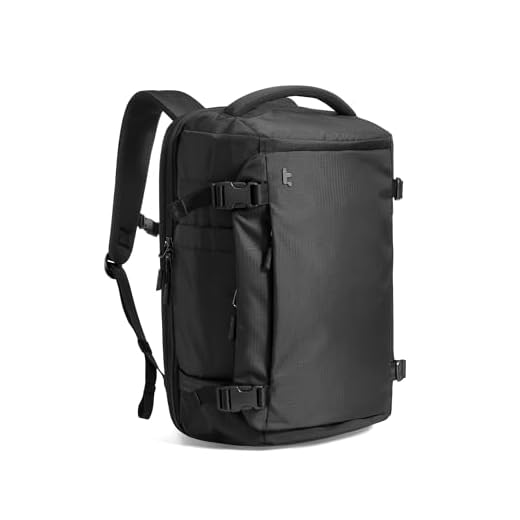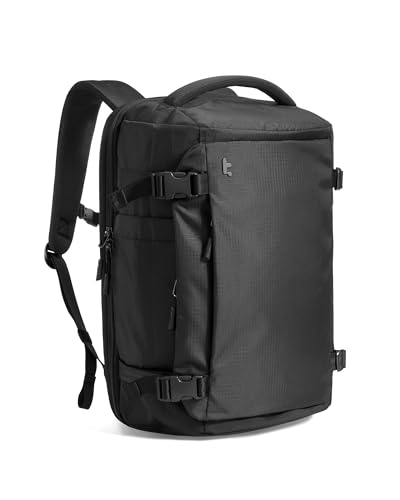






The best approach for travel across the continent involves a lightweight, versatile suitcase and a functional backpack. Opt for a carry-on with dimensions under 22 x 14 x 9 inches to maximize convenience during flights and train journeys.
Rolling suitcases provide a unique blend of stability and maneuverability, especially in bustling urban environments. Selecting a model with durable wheels ensures ease in navigating cobblestone streets or crowded stations.
A sturdy backpack is indispensable for day trips. Choose one with adjustable straps and multiple compartments to store essentials like water bottles, cameras, and navigation tools. This setup allows for a hands-free experience while exploring famous landmarks or local markets.
For longer stays, consider packing a compressible travel bag. These lightweight options can serve as extra storage during your travels, accommodating souvenirs or laundry if necessary. Focus on adaptability, durability, and comfort to enhance your overall travel experience.
Recommended Types of Bags for Travel to Europe
Opt for a versatile carry-on that can easily fit into overhead compartments. Choose a size around 20-22 inches, as this is typically accepted by most carriers. Look for features like wheels and a retractable handle for convenience.
Additionally, consider a backpack with ergonomic support. This will allow for hands-free movement and ease during city explorations. Select one with multiple compartments for organizing essentials, as this will enhance accessibility.
For longer trips or activities that necessitate more gear, a medium-sized suitcase is advisable. The dimensions should be around 24-26 inches. Ensure that it has durable materials and secure zippers to withstand various conditions.
| Type of Bag | Recommended Size | Main Features |
|---|---|---|
| Carry-on | 20-22 inches | Wheels, retractable handle |
| Backpack | Size as per personal requirement | Ergonomic support, compartments |
| Medium Suitcase | 24-26 inches | Durable materials, secure zippers |
Consider including a packing cube set to maximize organization inside your bags. These containers help keep clothing and accessories neatly arranged and can save space.
Finally, always check airline regulations before your trip to ensure compliance with size and weight restrictions. This will help avoid unexpected fees or complications during travel.
Choosing the Right Size of Luggage for Your Trip
Opt for a carry-on size if planning short trips. Most airlines allow a maximum dimension of 22 x 14 x 9 inches. This allows convenient storage in overhead compartments and avoids checked baggage fees.
For longer stays, consider a medium-sized suitcase with dimensions between 24 to 26 inches. This provides sufficient space for clothes, toiletries, and souvenirs without being overly bulky.
Planning an extensive adventure may necessitate a larger option, typically around 28 to 30 inches. While more space is beneficial, be mindful of weight limits imposed by airlines.
Check the regulations of your airline before traveling. Some low-cost carriers have stringent guidelines on both size and weight, potentially leading to additional charges or inconvenience.
A best luggage for freque can optimize travel efficiency. Versatile designs often feature expandable compartments or multiple pockets for organization.
If inclined towards a soft-sided option, a duffel bag with a capacity of 50 to 70 liters might be ideal for flexibility. For this type, explore the best travel duffel bags walmart for affordable choices.
Ultimately, the perfect fit depends on the length of your stay, style preferences, and mode of transportation. Evaluating your packing habits will guide you toward the ideal size.
Understanding Airline Baggage Policies and Fees
Research fees and size restrictions before booking flights. Each airline has distinct policies that impact your packing choices. Check the maximum dimensions for both checked bags and carry-ons, as these vary significantly.
Common Fee Structures
- Carry-on: Many airlines allow one free personal item but may charge for larger carry-ons.
- Checked bags: Expect charges for checked items, particularly with low-cost carriers. Prices may increase with weight and additional pieces.
- Overweight fees: Delivering items exceeding weight limits often incurs steep charges. Weigh your bags at home to avoid surprises.
Preparedness Strategies
- Measure dimensions: Use a tape measure to confirm exact measurements for both checked and cabin bags.
- Review the airline’s website: Policies often shift, so confirm the latest updates prior to departure.
- Consider travel insurance: Look for options covering baggage losses or delays, providing peace of mind.
Familiarize yourself with policy details and prepare adequately to maximize efficiency and minimize unexpected costs during travel.
Types of Carrying Systems: Suitcases vs. Backpacks
Opt for a suitcase if you’re looking for structure and organization. Hard-shell options provide better protection for fragile items, while soft-sided variations offer flexibility and expandability. Look for wheels and a telescoping handle for effortless transport through airports and cities. Choose a size that complies with airline regulations to avoid extra fees.
Backpacks are ideal for those wanting mobility and ease. Features like padded straps and hip belts distribute weight, making long walks more comfortable. Many models have multiple compartments, providing easy access to essentials without unpacking. Lightweight fabrics and water-resistant materials enhance durability and versatility. Perfect for navigating cobblestone streets or public transport.
Comparative Highlights
Suitcases excel in packing neatly with more rigid compartments, making organizing clothes and personal items simple. Their design minimizes creasing, ideal for business attire or dressy outfits. However, they can be cumbersome in tight spaces or uneven terrains.
Backpacks facilitate spontaneity, allowing for more active travel styles. They encourage frequent exploration and adaptability, fitting snugly in cramped settings, such as train stations. A well-sized pack can double as day gear, reducing overall items carried. Remember to choose a model with adequate support and storage for day-to-day essentials.
Final Thoughts on Selection
The choice ultimately hinges on travel style and destination. If planning a more urban or structured itinerary, a suitcase may serve best. For adventures requiring agility and on-the-go exploration, consider a backpack. Evaluate personal needs and preferences to find the perfect companion for travels ahead.
Best Features to Look for in Travel Gear
Durability is paramount; select materials that withstand wear and tear, such as high-denier nylon or polycarbonate. Waterproof options offer extra protection against unexpected rain.
Weight plays a significant role; lightweight options can ease transportation during long trips. Opt for designs that provide ample space without adding unnecessary bulk.
Look for wheels that rotate 360 degrees for easy maneuverability. Check for sturdy handles that ensure comfort when lifting or pulling your gear.
Pockets and compartments enhance organization, making it easier to access essentials. Zippered sections help keep belongings secure while traveling.
Consider expandable features to accommodate souvenirs or new purchases along the way. A built-in locking mechanism provides added security during transit.
Investing in travel gear with a warranty can offer peace of mind against potential defects. To capture memories during your travels, look for the best digital camera binoculars for photography.
Packing Tips for Different Destinations in Europe
For bustling cities like Paris or Rome, opt for a compact suitcase or a stylish duffel that can be easily maneuvered through crowded streets. Choose lightweight materials to ensure ease while traversing public transport.
In contrast, if the itinerary includes scenic hikes in the Alps or rugged landscapes in Scotland, a durable backpack with ample storage and hydration options provides the versatility needed for outdoor adventures. Ensure it fits comfortably, as you might spend long hours on the trails.
When visiting coastal areas such as the Mediterranean, incorporate a beach bag that accommodates towels and swimwear, while also being easy to pack away when not in use. Lightweight, foldable options work well.
For shorter city breaks, consider a carry-on that meets airlines’ regulations, allowing for quick transitions without the need to check baggage. Look for options with multiple compartments for organized packing.
Additionally, for colder climates, prioritize warm clothing and sturdy footwear. Utilize packing cubes to optimize space and keep items accessible. Don’t forget a waterproof layer for unexpected weather changes.
Traveling to Eastern European countries may require more rugged gear. A robust suitcase paired with a smaller daypack allows for flexibility in urban exploration and rural excursions alike.
Whenever possible, roll clothing to save space and minimize wrinkles. Include a portable charger for devices, ensuring that you remain connected throughout your travels.
How to Keep Your Luggage Safe While Traveling
Invest in high-quality locks. A sturdy lock deters casual theft and can secure your bags while unattended. Consider TSA-approved locks for easy checks by security personnel.
Utilize anti-theft features. Opt for bags that offer built-in security measures like cut-resistant straps or RFID-blocking compartments to protect valuables.
Always keep sensitive items close. Store essential documents, electronics, and valuables in a personal item that stays with you, rather than in checked bags.
Label your belongings clearly. Use tags with your contact information and ensure the tags are securely attached. This helps recover your items if they get lost.
Practice situational awareness. Be vigilant in crowded areas, and avoid placing bags on the floor or in vulnerable positions. Always monitor your possessions in public spaces.
Use tracking devices. Consider attaching GPS trackers to your bags, allowing you to locate them via smartphone if they go missing.
Research local crime rates. Understanding the safety of the areas you will visit helps inform your travel behavior and luggage choices.
Consider travel insurance. Protecting yourself with insurance not only covers theft but also losses and damages, providing peace of mind.







